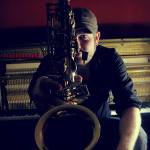As a working musician, one of the most important skills you can possess is the ability to perfectly execute what’s on the page in front of you. With budgets being cut, producers, engineers and bandleaders are now, more than ever, looking to hire musicians with the ability to sight-read; they need someone who doesn’t require excessive takes or a prior rehearsal. In the professional world, it’s a skill you will use daily, whether you’re cutting a movie soundtrack in L.A. or recording with an established gospel artist in Nashville.
Some of the coolest experiences of my career have been rooted in sight-reading. I’ve recently had the opportunity to play with a number of musical legends including 5th Dimension, The O’Jays and the Queen of Soul herself, Aretha Franklin. For every one of these gigs, I was reading the music for the first time while on stage with a microphone, a bandleader, and a paying audience in front of me.
So how do you get better? It’s hard to wrap your head around the idea of practising sight-reading, as the concept of sight-reading itself is based on the fact that you can’t practise beforehand.
I’ve put together a checklist of items that I always review immediately prior to sight-reading a piece. Arming yourself with this knowledge can instantly improve your ability to read a chart on the spot.
Before the count-off:
- Doubles/Mutes – Review the chart so that you know when to change instruments or grab your mute before you get there.
- Key – While checking the key of a piece is probably second-nature for any musician, it’s important to remember to review the piece for key changes before you start playing.
- Road Map – Use your finger to go through the form of the chart. By creating this physical connection with the chart you’re more likely to recognize and retain the information. Are there repeats? How many and how many times? DS/DC? Where’s the Coda?
- The Hard Stuff – Immediately identify the difficult passages and use a pencil to mark where the beat lies (see Fig. 1)

While these tips will help you in a live sight-reading situation, you can also use them in practice so that it becomes part of your routine before reading any piece of music, no matter the setting.
To develop your sight-reading skills in the long term, try the following activities.
- Find New Material – Solo transcriptions are readily available for free online in a variety styles. Universities often require doctoral students to transcribe solos and post their findings in a public setting. A simple search of “Jazz Sax Solos PDF” or “Classical Piano Music PDF” will provide you with a plethora of new material to test your sight-reading skills. For a challenge, try reading transcriptions of solos originally performed on a different instrument.
- Grab a Metronome and Charge Ahead – In practice, put your metronome on 2&4 or 1&3 and push through the piece without stopping. In a live setting, the band won’t stop because you’ve stumbled and lost your place. So one of the best things you can do is coach yourself to play through and learn how to recover. Here are some things to think about when playing with a metronome:
- See The Beat, Not The Notes – It sounds strange, I know. But rhythm is almost more important when you’re playing a difficult passage. Look for beats and, if they aren’t obvious, mark them with a pencil before playing the piece.
- Look Ahead – Try to internalize 1-2 beats while seeing 3 or 4 beats ahead.
- Improve Your Vocabulary – There are only 12 notes in all of music, but an endless combination. The better you are at recognizing the patterns that characterize each musical style, the better you’ll be at sight-reading.
- Build Focus and Endurance – At the end of your regular practice session, dedicate 20-30 minutes to practicing sight-reading. After you’ve started building your confidence, try building your endurance by creating a sight-reading set list. It will come in handy for those long concerts and recording sessions.
Whether it’s on stage or in the studio, getting to a place where the music is in your hands and not on the paper will keep you working as a professional musician.
 Tyler Summers is a graduate of the University of North Texas where he spent two years playing with the GRAMMY Award-winning One O’Clock Lab Band. An active musician and arranger in the Nashville music scene, his ability on saxophones, clarinet, and flute have put him on the stage with highly respected artists including Aretha Franklin, Martina McBride, Gladys Knight, The Temptations, The Four Tops, Feist, Jakob Dylan, Spoon, Gloria Gaynor, Estelle, The O’Jays, 5th Dimension, The Raconteurs, Natalie Grant, Lee Ann Womack, B.Reith, and Tom “Bones” Malone. MORE
Tyler Summers is a graduate of the University of North Texas where he spent two years playing with the GRAMMY Award-winning One O’Clock Lab Band. An active musician and arranger in the Nashville music scene, his ability on saxophones, clarinet, and flute have put him on the stage with highly respected artists including Aretha Franklin, Martina McBride, Gladys Knight, The Temptations, The Four Tops, Feist, Jakob Dylan, Spoon, Gloria Gaynor, Estelle, The O’Jays, 5th Dimension, The Raconteurs, Natalie Grant, Lee Ann Womack, B.Reith, and Tom “Bones” Malone. MORE
Get 20% off Tyler Summers’ chart “Changing Spaces” using coupon code SPACES20 at checkout!
